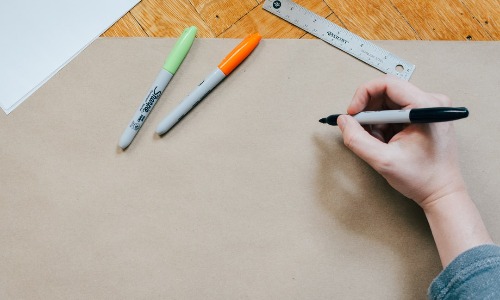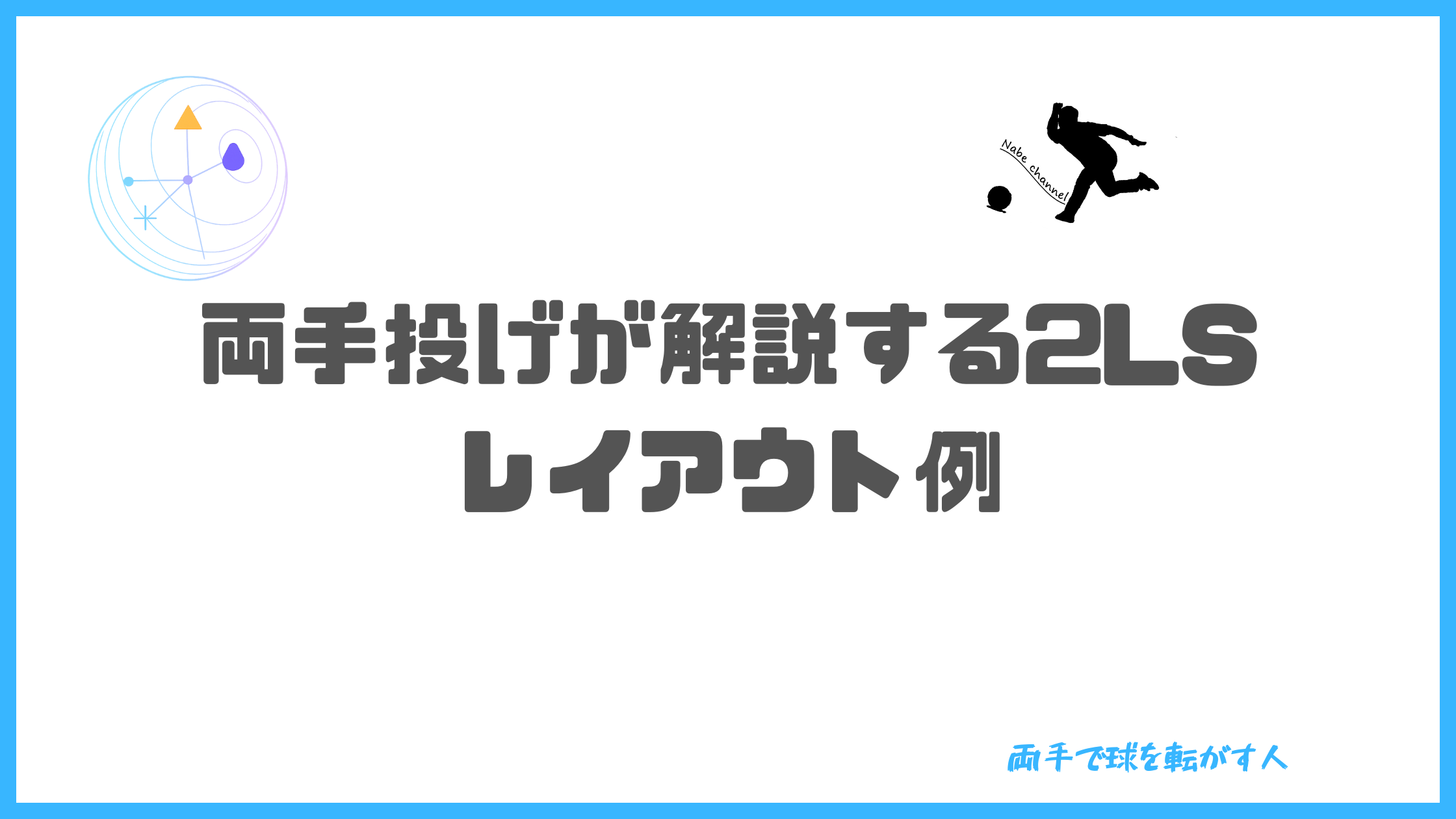※This article was written by a Japanese person using AI and a translation machine.
Please read it with some discretion.
Elevate your ball‑reaction consistency by using industrial‑standard layout logic built for the modern no‑thumb delivery.
1. What Is the 2‑Hand Layout System (2LS)?
- 2LS is a layout and drilling framework created by Storm Bowling to optimize ball motion for two‑handed/thumbless bowlers .
- Unlike one‑hand systems that locate axis based on the thumb–finger pocket, 2LS uses the bridge point of your hand to establish the Positive Axis Point (PAP) — this fits the no‑thumb grip geometry better .
- It uses three linear measurements in inches — Pin to PAP, PSA (or Val) to PAP, and Pin to Center‑of‑Grip (CoG) — combined using Storm’s Lightning Arc chart, to produce extremely consistent and repeatable layouts .
2. Why Use 2LS Internationally?
- The three‑number format (e.g. 5 × 4 × 3.5) is language‑neutral, easy to share across borders or with PSOs (Pro Shop Operators) worldwide.
- Reproducibility is high: international pros (e.g. PBA tour players like Belmonte, Svensson, Simonsen, Troup) and many junior programs have adopted two‑hand styles over the past decade . 2LS grew in tandem.
- It avoids the “angle/degree” nuance of VAL‑based systems like Dual Angle or PAL, making it easier for Japan‑based players to get the same drilled ball result whether in Osaka, London or Las Vegas .
3. Core Measurements Explained
(All distances are in inches; 1 inch ≈ 2.54 cm.)
| Term | Effect if smaller (<3⅜″) | Effect if larger (>3⅜″) |
|---|---|---|
| Pin → PAP | Early roll, smoother overall motion; less backend pop | Longer skid, more angular transition, stronger backend close-out |
| PSA → PAP | Punchy front‐end rev motion | Smoother transition; lasting motion through the midlane |
| Pin → Grip‑Center | Low differential, minimal flare, better control, straighter path | Higher flare, stronger hook shape, deeper motion before finish |
- The 3⅜″ threshold is central; it’s the point where the reaction switches from “controlled” to “strong” .
- PSA (Preferred Spin Axis) measurement applies only on asymmetrical cores; for symmetrical cores, use a reference line 6¾″ off the pin through the COG instead .
4. Step‑by‑Step Layout Using 2LS
(Example procedure for right‑handed no‑thumb player; mirror for lefties)
- Identify bridge point in the grip (center of web between index and middle fingers). Draw axes relative to this bridge point.
- Locate your PAP using that reference — not thumb/finger pocket midpoint (as in one‑hand layouts) .
- Using rulers or Spectre layout tools, draw three semi‑circular arcs:
- Pin→PAP arc at distance you choose (e.g. 4″)
- PSA→PAP arc (typically 3–4″ for asym/core choice)
- Pin→CoG arc per your preference (e.g. 3½″)
- Apply the Lightning Arc chart (Storm’s 2LS guide spreadsheet or printed chart) to align arcs and determine the midline of the core .
- Mark centreline perpendicular to midline, passing through intersection of arcs — this determines where to position bridge, finger, and thumb holes.
- Drill fingers on the midline, no lateral offset — misalignment will change the PAP and ball motion drastically. Suggested drilling depth: no more than 2¾″ to avoid unwanted RG rise and sluggish backend reaction .
5. Recommended Starter Layouts (Storm #1–#6)
Storm ranks layouts from weakest to strongest for rev‑dominant bowlers :
| # | Pin→PAP × PSA→PAP × Pin→CoG | Approx. Reaction | Best for |
|---|---|---|---|
| 1 | 5½ × 5 × 2 | Clean → midlane → angular | Burn‑condition lanes, older surfaces |
| 2 | 2 × 6 × 5 | Smooth, controllable midlane | Short patterns with heavy backend friction |
| 3 | 5 × 4 × 3½ | Balanced midlane read | Benchmark across many patterns (versatile) |
| 4 | 4½ × 3 × 4½ | Slightly less exit angle | Speed‑dominant bowlers, medium‑long oil volume |
| 5 | 4 × 4 × 5 | Stronger overall motion, confidence‑inspiring | Transition play, urethane, over/under condition |
| 6 | 3½ × 4 × 6½ | Earliest roll, most aggressive | Flat/difficult fresh patterns, speed‑dominant styles |
Benchmark layout: Storm #3 (5 × 4 × 3½) is highly recommended as a starting point—power and control balanced for most conditions .
6. Which Layout to Use When?
- If your PAP is unknown, get recorded video and measure or ask your international PSO for help — 2LS layouts are reproducible across borders .
- Use Storm #3 (5 × 4 × 3½) as a universal “go‑to.” Then adjust ± size of one measurement to tweak for your style.
- Want more skid + backend pop? Increase Pin→PAP (e.g. 5½).
- Want smoother motion? Decrease Pin→CoG (e.g. 3½ or less).
- Reddit users consistently report that †layouts around 5–5.25″ pin‑to‑PAP and VAL angles of 60–65° (post conversion) feel strongest and more forgiving on longer patterns, especially if you’re rev‑dominant (~400–500rpm) .
- Japanese bowlers on lane “tighter transition” conditions may prefer layout #3 or #4, while “juicy oil” lanes or distant lane houses may call for layout #2 or #6.
7. 2LS vs Other Systems
- PAL uses Pin above CoG distance and requires specific hole depth (deeper) and angle (VAL) — more complex to scale internationally .
- Dual Angle Method (VLS) is very popular among coaches, based on finger‑to‑pin angle plus Pin‑to‑axis tilt — however, users report that once accustomed, 2LS is equally effective and easier to repeat (especially for club players) .
8. International Conversion & PSO Communication
- Converting inches to millimeters precisely:
- 3⅜″ = 85.73 mm; 4.0″ = 101.6 mm; 5.0″ = 127 mm; etc.
- When emailing a PSO in Europe, Asia, North America, or Latin America, use notation like:
“Layout 5 × 4 × 3.5″ (longPin‑to‑Axis = 5.0, PSA‑to‑Axis = 4.0, Pin‑to‑Grip = 3.5).” - Always specify whether you are Right or Left handed, thumbless two‑hand style, and your measured PAP location and orientation (for example, “5″ over, 1″ up from the bridge”).
- Along with measurements, ask your PSO to confirm the hole depths (max 2¾″) and ideal weights after drilling.
9. Common Manufacturing & Drilling Notes
- Always use a 0.0° or neutral VAL pitch unless you have special release angle reasons. With two‑handed deliveries, bumping pitch may change motion drastically.
- Symmetrical vs Asymmetrical covers: use PSA only for asym; for symmetrical, ignore PSA arc input and rely on Pin‑to‑CoG instead.
- Drawing straight, accurate arcs requires tools like Storm Arc Ruler, Spectre layout ruler, or sturdy metal tools — not flimsy plastic — to avoid misalignment across months .
- Finger pitch and spacing alignment is especially critical: offsetting fingers off the midline even slightly shifts the axis point and ruins the ball reaction .
10. Get Started with These 3 Layouts
(Tailored for different styles)
- All‑Purpose Starter → 5 × 4 × 3.5 (Storm #3): medium flare, ideal as your first 2LS drill for overseas competition.
- Smoother Control, Mid‑Lane Focus → 4½ × 3 × 4½ (Storm #4): for speed‑dominant or longer oil conditions.
- Aggressive Attack Option → 3½ × 4 × 6½ (Storm #6): for high‑rev bowlers on flat, fresh patterns or international deep oil competitions.
⚠️ At‑A‑Glance 2LS Tips
- 📏 Stick to inches when communicating layout (not degrees).
- 💡 Always mask your style (rev‑dominant vs speed‑dominant) and PAP location.
- 🧪 Begin with Storm #3 layout across a bowling arsenal. Then slowly experiment ±0.5″ dimensions across layout #1–#6 for nuance.
- 🛠 Avoid drilling deeper than 2⅞″ — beyond that, flaring dynamics weaken regardless of layout .
- 📷 Video‑measure your PAP for PSO use if you don’t yet know it.
📌 Summary
The Two‑Hand Layout System (2LS) provides an intuitive, reproducible way to maximize ball motion for two‑handed bowlers worldwide. By using a three‑number pinch‑point combined with Lightning Arc logic, two‑handers can design powerful, consistent drilling layouts across international bowler communities. For players stepping into overseas competition or remote coaching, 2LS offers clarity—once you know your PAP, you can replicate your reaction anywhere in the world.



コメント